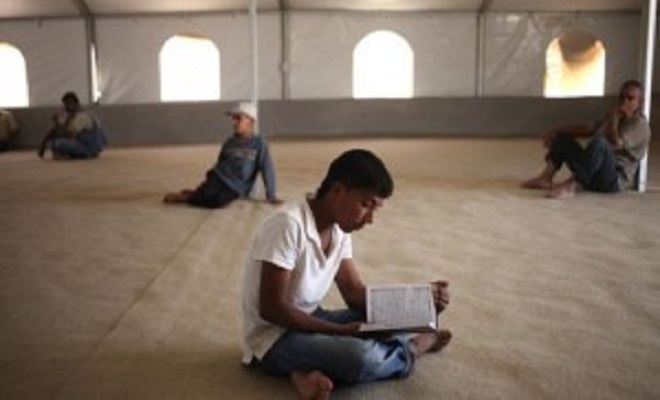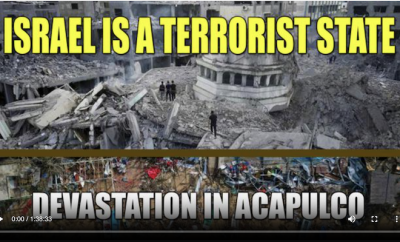 NEO.org
NEO.org
Featured
“Is the UN Funding Terrorism?” The Truth About Zaatari Refugee Camp
by , via NEO.org:
700,000 Syrians reside at Zaatari refugee camp within the borders of the Hashemite Kingdom of Jordan. These are Syrians who have fled their homes in the continuing civil war. Since 2011, fighters backed by the United States, France, Britain, Saudi Arabia, Qatar, and Jordan have been battling the Syrian government.
Many of the insurgent forces that seek the overthrow of the Syrian government are not Syrian. Many are Jordanians. Others are Turkish, Qatari, Pakistani, or Libyan. Fighters from as far away as Malaysia have been arrested by Syrian officials.
According to the US military’s report, there are over 2,000 factions among the Syrian “opposition.” They include the Islamic State of Iraq and Levant (ISIL), the Al-Nusra Front, as well as groups referring to themselves as “Al-Qaeda in Syria.”
The Model Refugee Camp
Zaatari refugee camp has been propped up as the model project of the United Nations Relief and Works Agency.
In the lobby of the United Nations Secretariat Building, the Jordanian UN mission sponsored a photo exhibition depicting life in the camp. Associate Professor of Photography Nina Berman of Columbia University described how, with funding from the United Nations, she had taken photographs documenting Zaatari life. The photographs have been blown up to large sizes and now decorate the walls surrounding the camp. According to Berman, Zaatari provides much better services than many other refugee camps.
Ursula Lindsey, a blogger who visited the camp, said it is commonly called “The Hilton” because it is so much better than other camps.
The United Nations Relief and Works Agency is currently asking for more money, saying that it doesn’t have enough resources for its many refugee camps in Iraq, Jordan, and Turkey. The UNRWA continues to appeal for more funds to address the refugee crisis. Diplomats from around the world are bemoaning the “underfunding of the UN system” in speeches and appeals for funds. The US-aligned gulf states continue to donate billions of dollars for refugee relief and hold fundraisers for Syrian refugees. Much of the money ends up going to Zaatari.
What is being ignored is something that has been only subtly mentioned in all of the publicity surrounding Zaatari refugee camp. Zaatari isn’t just a camp for displaced Syrians. Zaatari is a base — for recruitment by the armed terrorists who are currently destabilizing Syria.
The Free Syrian Army (FSA) is not a group of choir boys. In 2014 a number of FSA factions joined with ISIL. Free Syrian Army leaders openly admit that the group trains alongside Al-Nusra Front and other Al-Qaeda-linked extremist groups. Videos of the atrocities of FSA fighters fill the internet. The Free Syrian Army engages in beheadings, torture, and in some instances cannibalism.
In his article on Zaatari Refugee Camp, David Remnick of the New Yorker interviewed many anti-government insurgents at Zaatari. One of them, Nabegh Srour, was reported to have said he hoped Israel would invade Syria, saying, “Our enemy is Bashar, not Israel.”
According to Ursula Lindsey, many of the inhabitants of Zaatari Refugee camp were actually “escorted to the border by the Free Syrian Army.” The Free Syrian Army in coordination with the Jordanian military has set up an intake process at the border. The Jordanian military meets the Syrians who have been “escorted by the Free Syrian Army” at the border, and places them at a screening center, eventually transporting them to Zaatari camp.
The record of the FSA forces the question: Are these Syrians being “escorted to the border” by the Free Syrian Army of their own free will?
Lindsey’s writings on the camp document how the camp is completely controlled by anti-Syrian activists. She writes, “I was not able to understand how the presence of FSA in the camp was tolerated.” She also described how refugees who have served the Syrian Armed Forces are segregated from the larger population of the camp, in order to keep them away from Free Syrian Army members.












